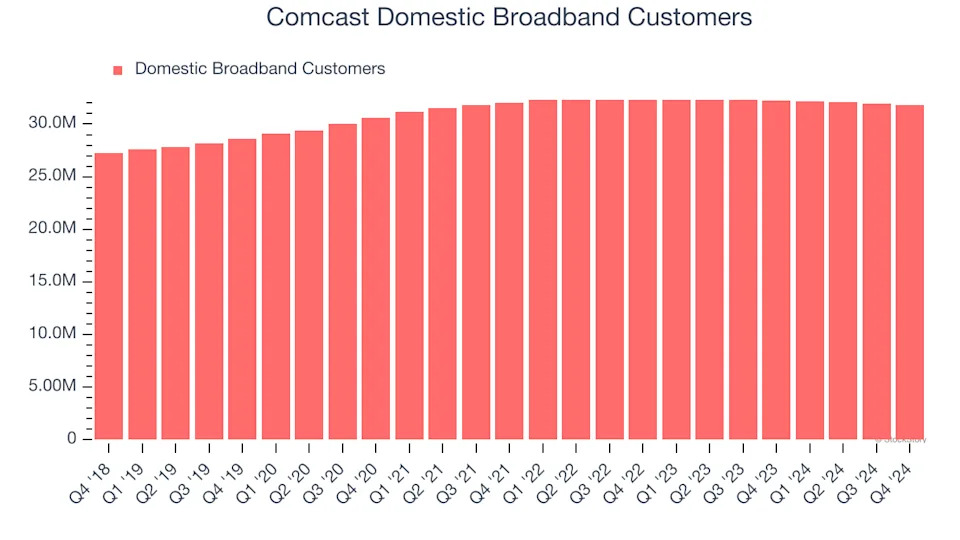
3 Reasons CMCSA is Risky and 1 Stock to Buy Instead

What a brutal six months it’s been for Comcast. The stock has dropped 21.3% and now trades at a new 52-week low of $32.57, rattling many shareholders. This might have investors contemplating their next move.
Is there a buying opportunity in Comcast, or does it present a risk to your portfolio? See what our analysts have to say in our full research report, it’s free .
Despite the more favorable entry price, we're swiping left on Comcast for now. Here are three reasons why you should be careful with CMCSA and a stock we'd rather own.
Why Do We Think Comcast Will Underperform?
Formerly known as American Cable Systems, Comcast (NASDAQ:CMCSA) is a multinational telecommunications company offering a wide range of services.
1. Inability to Grow Domestic Broadband Customers Points to Weak Demand
Revenue growth can be broken down into changes in price and volume (for companies like Comcast, our preferred volume metric is domestic broadband customers). While both are important, the latter is the most critical to analyze because prices have a ceiling.
Over the last two years, Comcast failed to grow its domestic broadband customers, which came in at 31.84 million in the latest quarter. This performance was underwhelming and implies there may be increasing competition or market saturation. It also suggests Comcast might have to lower prices or invest in product improvements to accelerate growth, factors that can hinder near-term profitability.

2. Projected Revenue Growth Shows Limited Upside
Forecasted revenues by Wall Street analysts signal a company’s potential. Predictions may not always be accurate, but accelerating growth typically boosts valuation multiples and stock prices while slowing growth does the opposite.
Over the next 12 months, sell-side analysts expect Comcast’s revenue to stall, a slight deceleration versus its flat sales for the past two years. This projection doesn't excite us and indicates its products and services will see some demand headwinds.
3. Previous Growth Initiatives Haven’t Impressed
Growth gives us insight into a company’s long-term potential, but how capital-efficient was that growth? Enter ROIC, a metric showing how much operating profit a company generates relative to the money it has raised (debt and equity).
Comcast historically did a mediocre job investing in profitable growth initiatives. Its five-year average ROIC was 8.8%, somewhat low compared to the best consumer discretionary companies that consistently pump out 25%+.

Final Judgment
Comcast doesn’t pass our quality test. Following the recent decline, the stock trades at 7.5× forward price-to-earnings (or $32.57 per share). While this valuation is optically cheap, the potential downside is huge given its shaky fundamentals. There are better investments elsewhere. We’d recommend looking at our favorite semiconductor picks and shovels play .